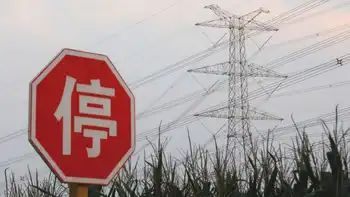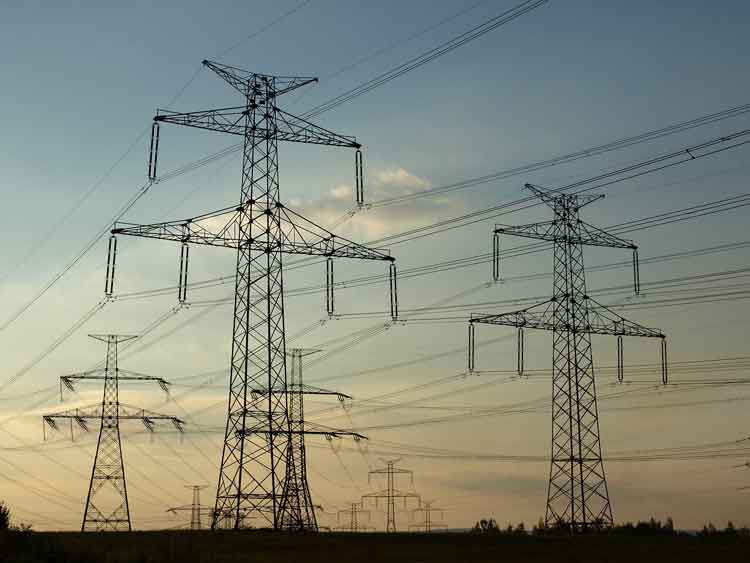Great Northern relies on “green” growing
By Toronto Star
CSA Z462 Arc Flash Training - Electrical Safety Essentials
Our customized live online or in‑person group training can be delivered to your staff at your location.

- Live Online
- 6 hours Instructor-led
- Group Training Available
Like falcons bred to chase seagulls from airport runways, the wasps target, attack and destroy one of the few and most damaging pests found in modern vegetable greenhouses – the tomato-destroying whitefly.
"We breed our own biological control," explains Darren Didychuk, president of Great Northern Hydroponics, a large greenhouse operator in Kingsville, Ont.
There are hundreds of egg-laden tags attached to tomato-plant stems throughout the 50-acre operation, where bug warfare has proved a more efficient and eco-friendly alternative to chemical pesticides and herbicides.
Like many operators in Ontario's $1.3 billion greenhouse industry, Great Northern relies on "green" innovation to stay competitive with growers in the United States and Mexico, and is not afraid to invest in a new approach if the long-term benefits are clear.
More recently, it has extended that philosophy to the way it uses energy, which in an Ontario hothouse can account for up to 40 per cent of total business costs. As fuel prices rise, it becomes that much tougher for an operator to survive. "It hurts," says Didychuk, adding that volatile oil and natural gas prices have pushed many in the industry to switch to inexpensive, but far dirtier, coal systems.
Great Northern decided to buck that trend. It's sticking with natural gas, the cleanest of the fossil fuels, and has invested $20 million in a high-efficiency co-generation system – a first of its kind for North America – based on a model that has proven successful in Europe.
A typical natural gas boiler produces heat, and where electricity is needed, a greenhouse will get its power from the grid. But a co-generation system makes the most efficient use of natural gas, by generating heat as a by-product of in-house electricity production.
In Great Northern's case, natural gas is burned in four high-efficiency GE Jenbacher engines, which can produce about 12 megawatts of electricity. The heat exhaust from those engines, reaching 400 degrees Celsius, is captured in water and carried into the greenhouse, where the heat is released.
"The greenhouse is like a car radiator," says Didychuk, explaining that the water keeps cycling to the greenhouse and back, carrying heat away from the engines and dumping it in the greenhouse building. In summer the heat can be used to control humidity, or during cooler nights. It can also be stored in large water tanks and used later.
But it's the electricity generation that makes this system economical. Great Northern will use about two of the 12 megawatts of electricity that can be produced from the system to power its operations. The other 10 megawatts will be sold onto the grid under a 20-year power-purchase contract approved by the Ontario Power Authority in 2006.
"Our savings are going to come from selling electricity to the province," says Guido van het Hof, general manager at Great Northern.
The set-up could more accurately be called "tri-generation" because the high-purity carbon dioxide emitted from the engines will be used to boost tomato growth. The gas is pumped into the hothouse through a network of plastic sausage tubes that passes by the stems of every tomato plant.
Tomatoes are known to be aggressive consumers of CO2, but only natural gas systems can deliver emissions pure enough to use. Greenhouse operators using coal or oil must purchase CO2 separately. Michael Bouk, executive director of agricultural co-operative AgEnergy, which manages volatility for member greenhouses by pre-purchasing bulk natural gas on the futures market, says co-generation systems such as Great Northern's could prove a win-win for greenhouse operators and the province.
Operators are looking to lower energy costs and to bring predictability to their business, while the government is in search of cleaner sources of power production as part of a plan to wean the province off coal. Co-generation meets both needs. "We think there's a lot of potential for that," Bouk says.
The industry is putting some hope in a new provincial clean-energy program being launched by the Ontario Power Authority to speed up adoption of co-generation systems.
Under the clean-energy standard offer program, or CESOP, the government will pay a premium for electricity that comes from such systems. It's modelled after a program in place since early 2007 for solar, wind and other small renewable-energy projects. As "standard offer" implies, the program aims to simplify the process of selling electricity onto the grid by creating a standard set of rules and prices that apply equally to similar projects.
But Didychuk, who wants to replicate what was done at Great Northern at other greenhouses, isn't convinced CESOP is simple enough to stimulate the kind of investment needed. "For it to be a standard offer you're supposed to take the complexity out of it," he says.
Rob Mastronardi, who operates Cedar Beach Acres, a greenhouse in Kingsville that has resorted at times to burning coal, says co-generation makes sense in a perfect world but doesn't offer enough to make it worth the hassle.
"I'm a farmer," he says. "I don't have time to shop around and solicit large corporations to build a co-generation system at my facility."
And for those who do make the effort to go down that path, they'll often run into a brick wall. "The problem is we're confined by the grid," says Bouk, pointing out that in areas where greenhouses are clustered access to distribution lines is often limited or off limits.
Jim MacDougall, who manages distributed generation programs at the Ontario Power Authority, concedes the program is complex but said the agency is working with various industry associations in attempts to address their concerns.
Some observers doubt the co-generation option will gain any meaningful momentum, arguing that the political culture in Ontario – and across Canada – is too resistant to the kinds of changes required.
"Politically it's not accepted yet that the greenhouse industry could be part of the power grid," says Robert Bierhuizen, who runs Sunrise Greenhouses in Vineland, Ont.
He says co-generation systems that supply energy to greenhouses in the Netherlands contribute thousands of megawatts to that country's grid. By comparison, the low-hanging fruit in Ontario is considered a mere 200 megawatts.
Great Northern, for example, had grand plans of spreading co-generation religion throughout the greenhouse sector. Government bureaucracy and foot-dragging have dampened those efforts.
"We will still build two or three more of these systems, and that will be a positive impact. But it will be outshone by the amount of coal going in," says Didychuk. "It's unfortunate. There's an opportunity here to really embrace these positive technologies."











